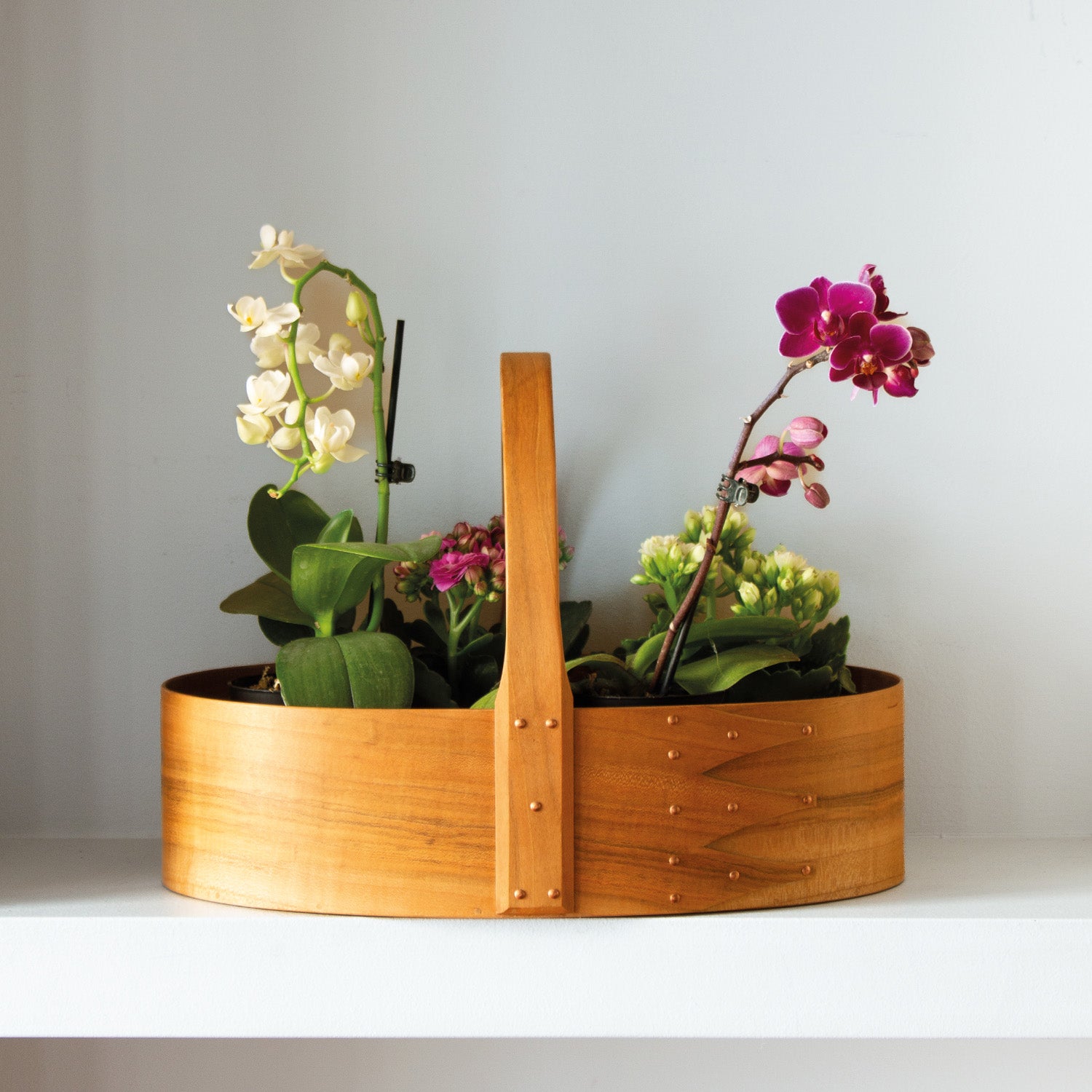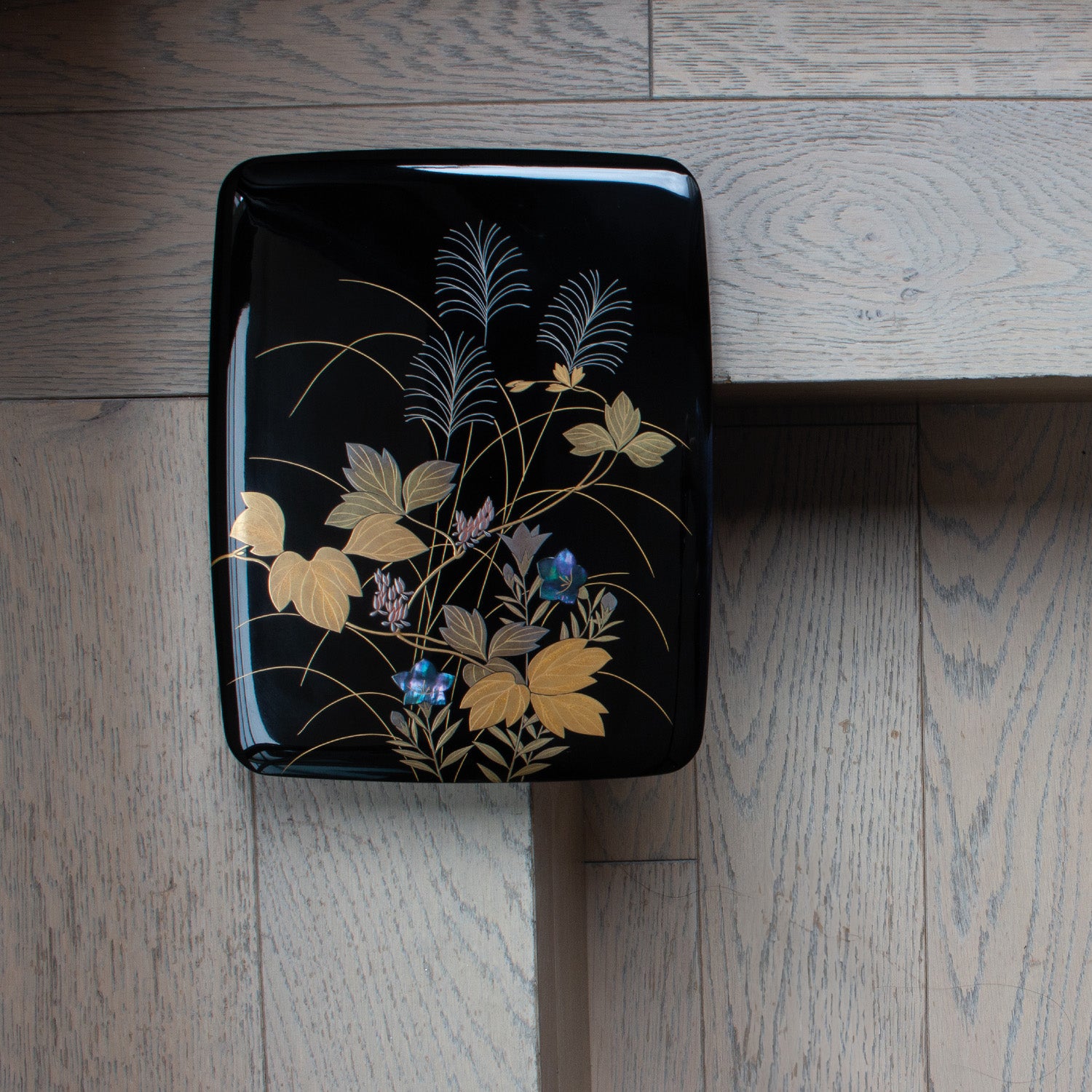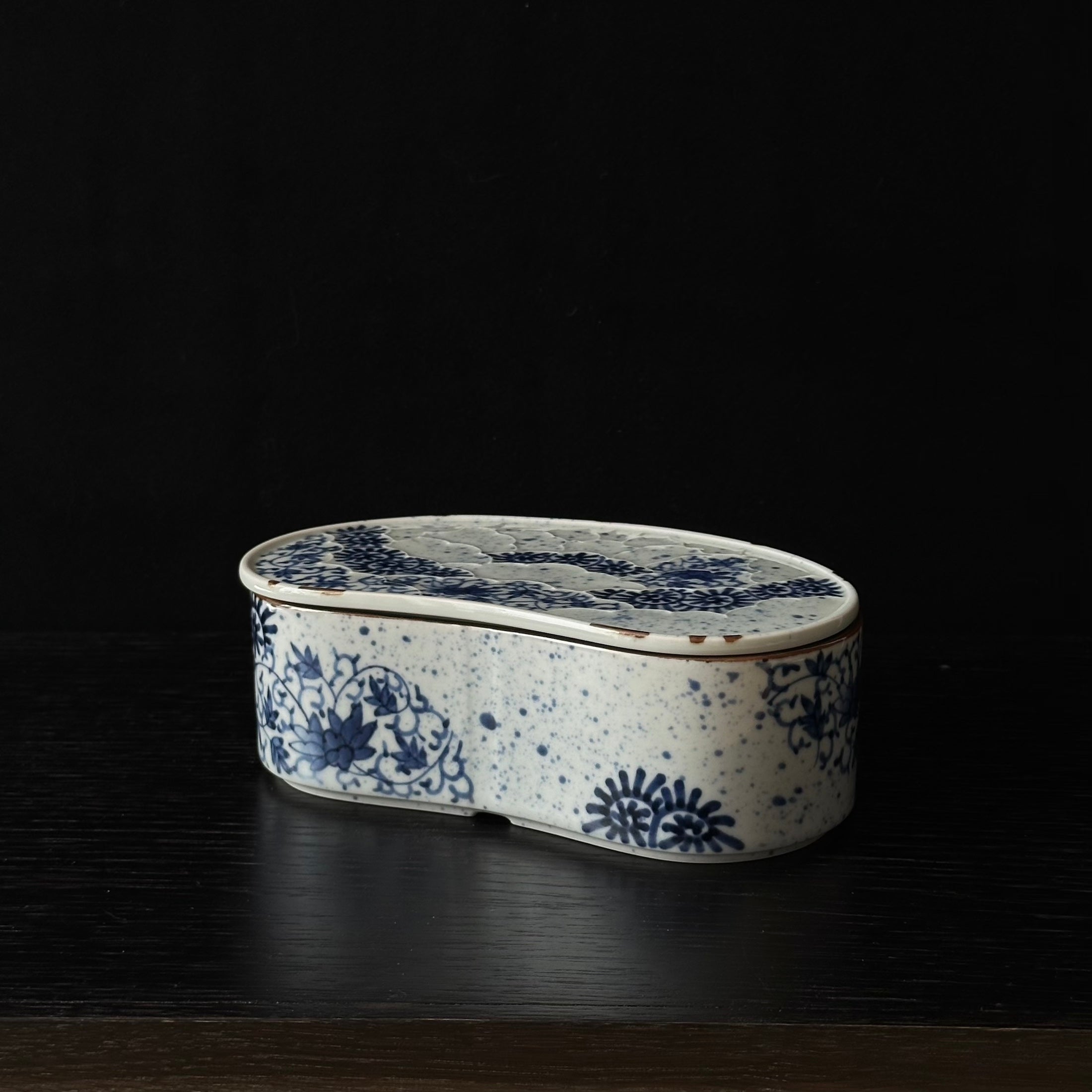
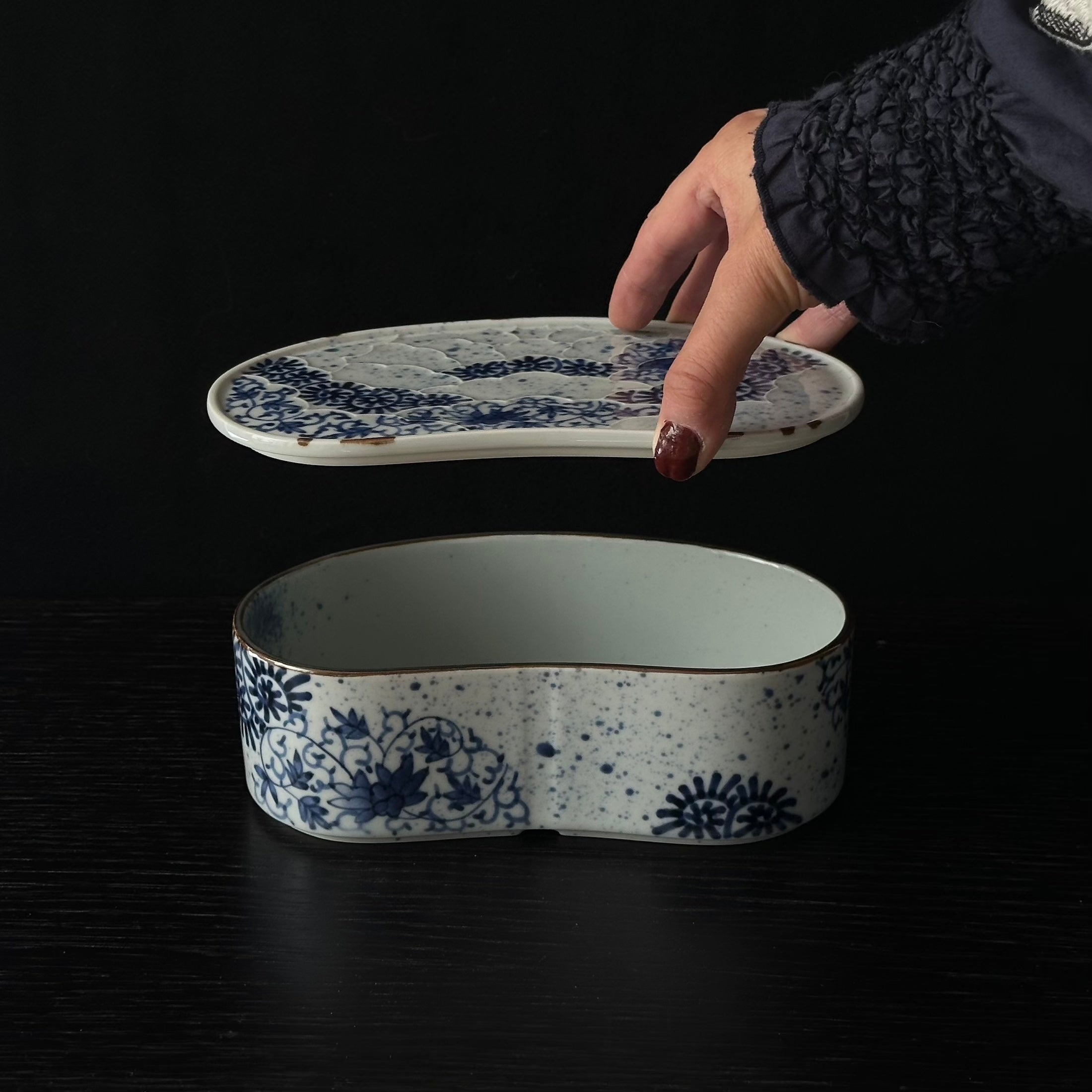
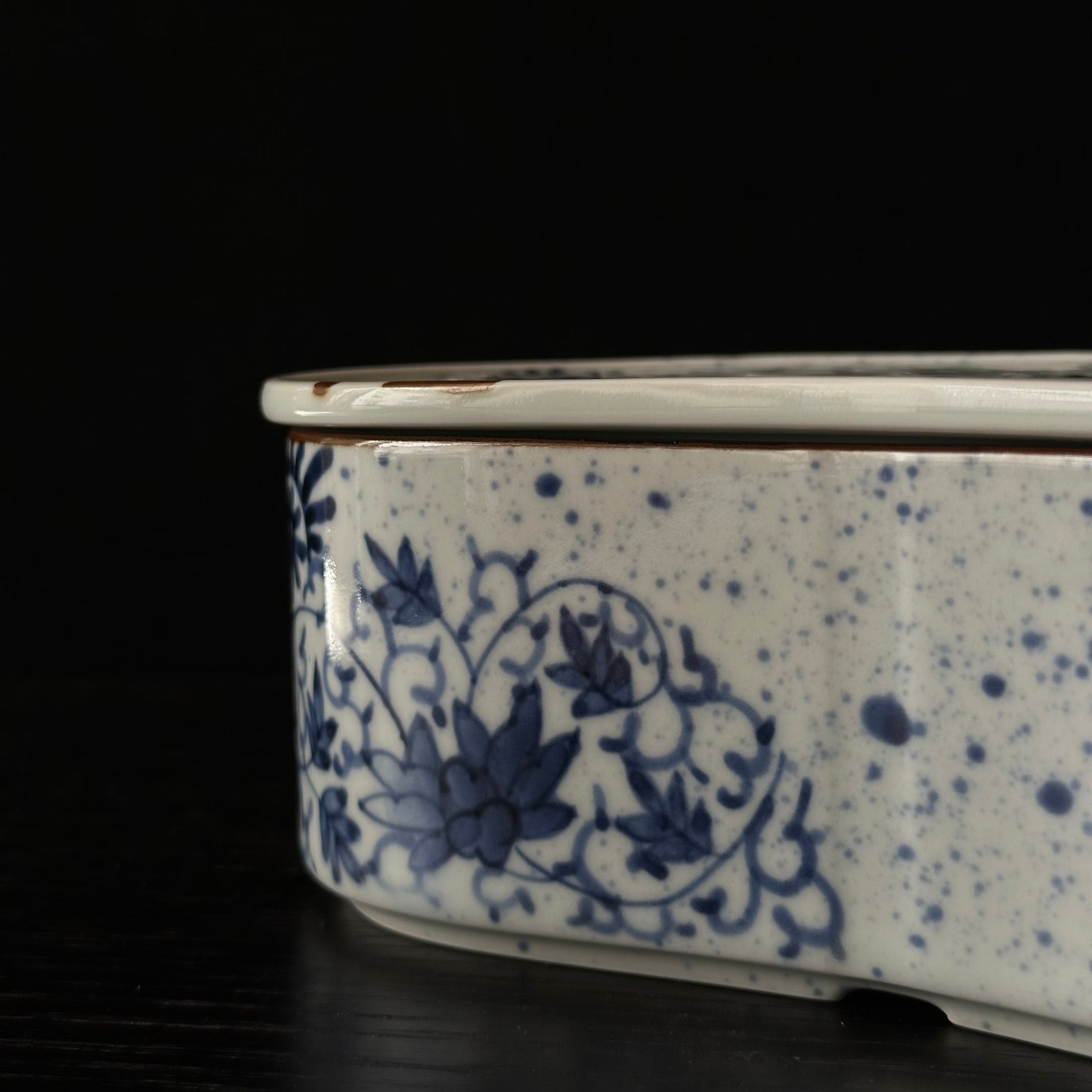
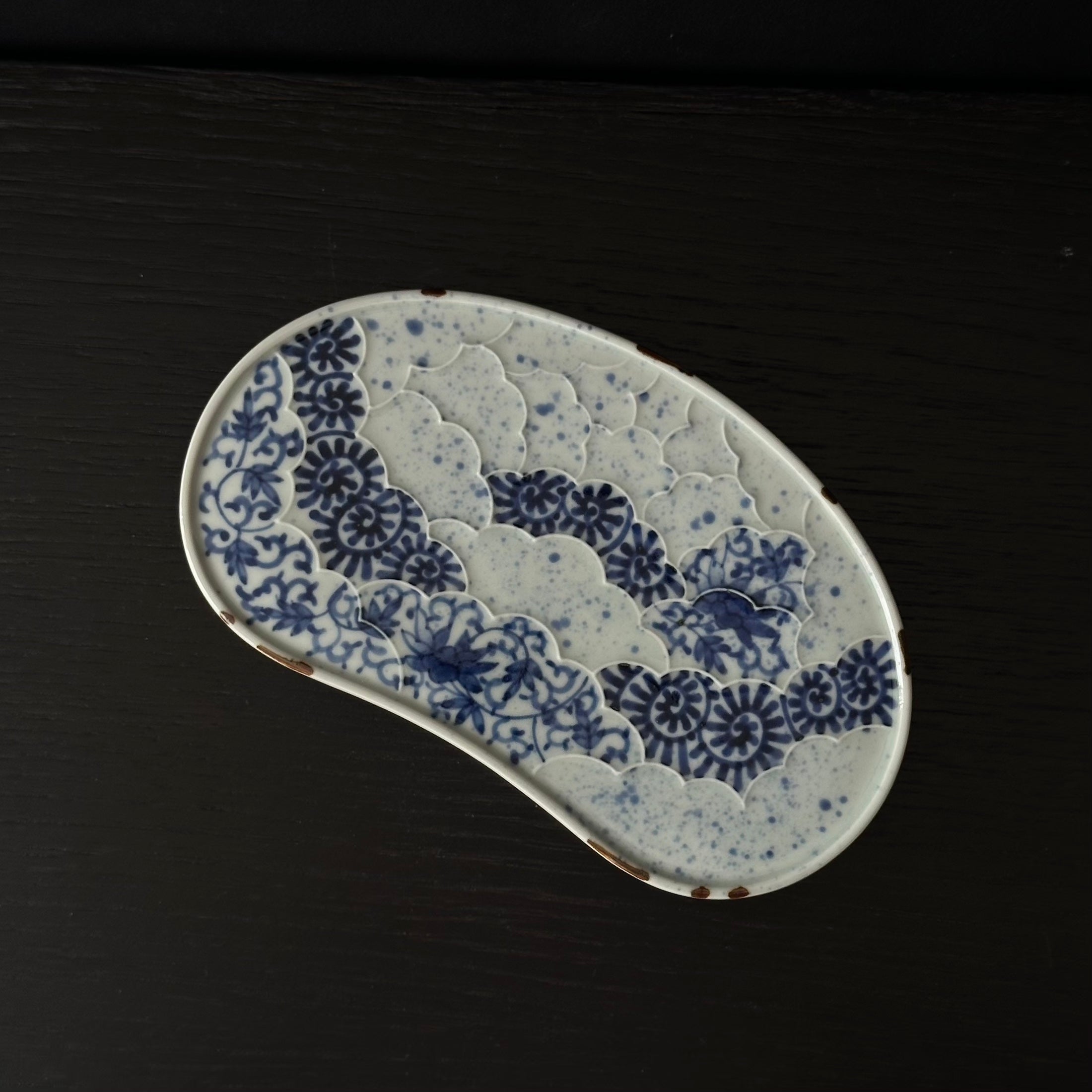
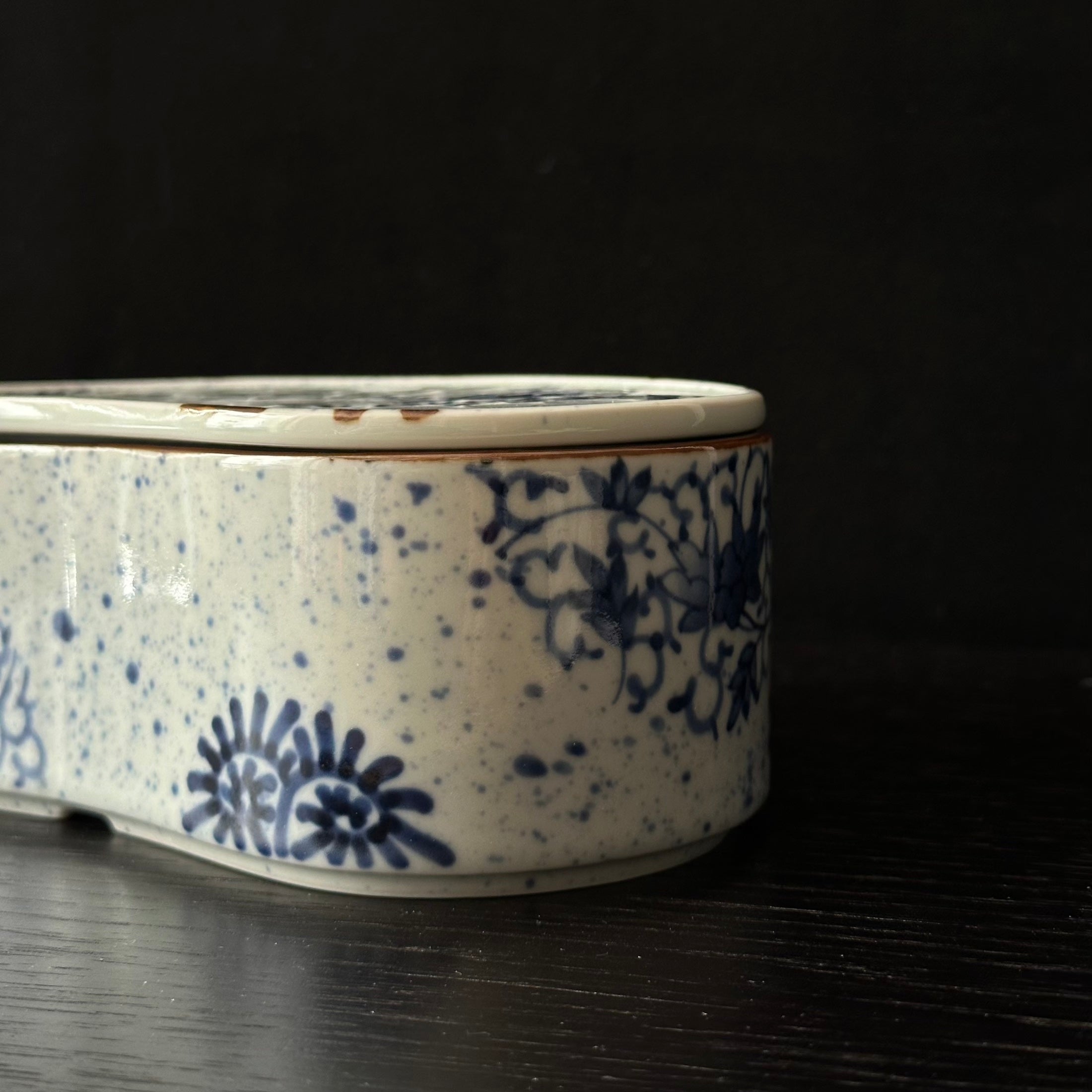
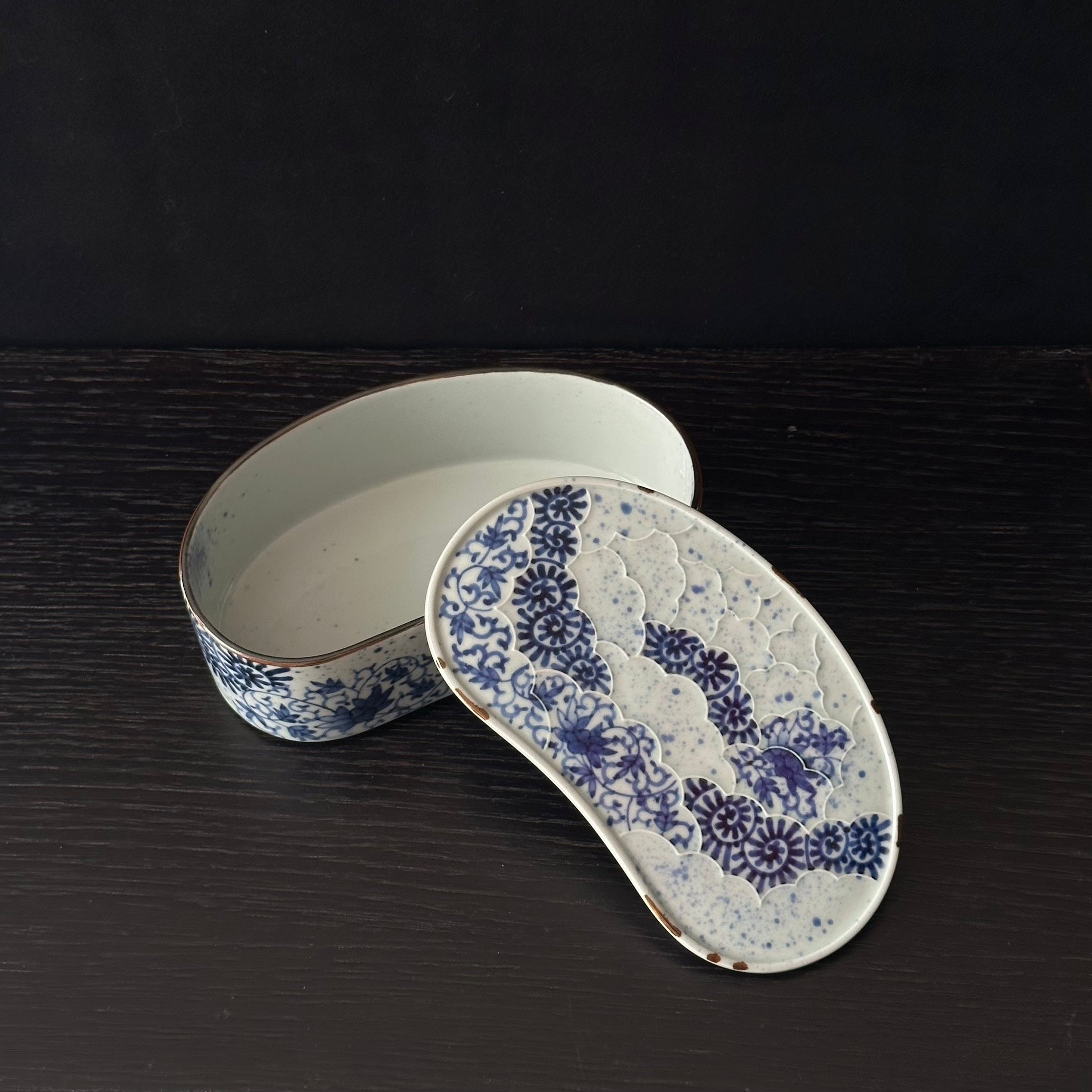
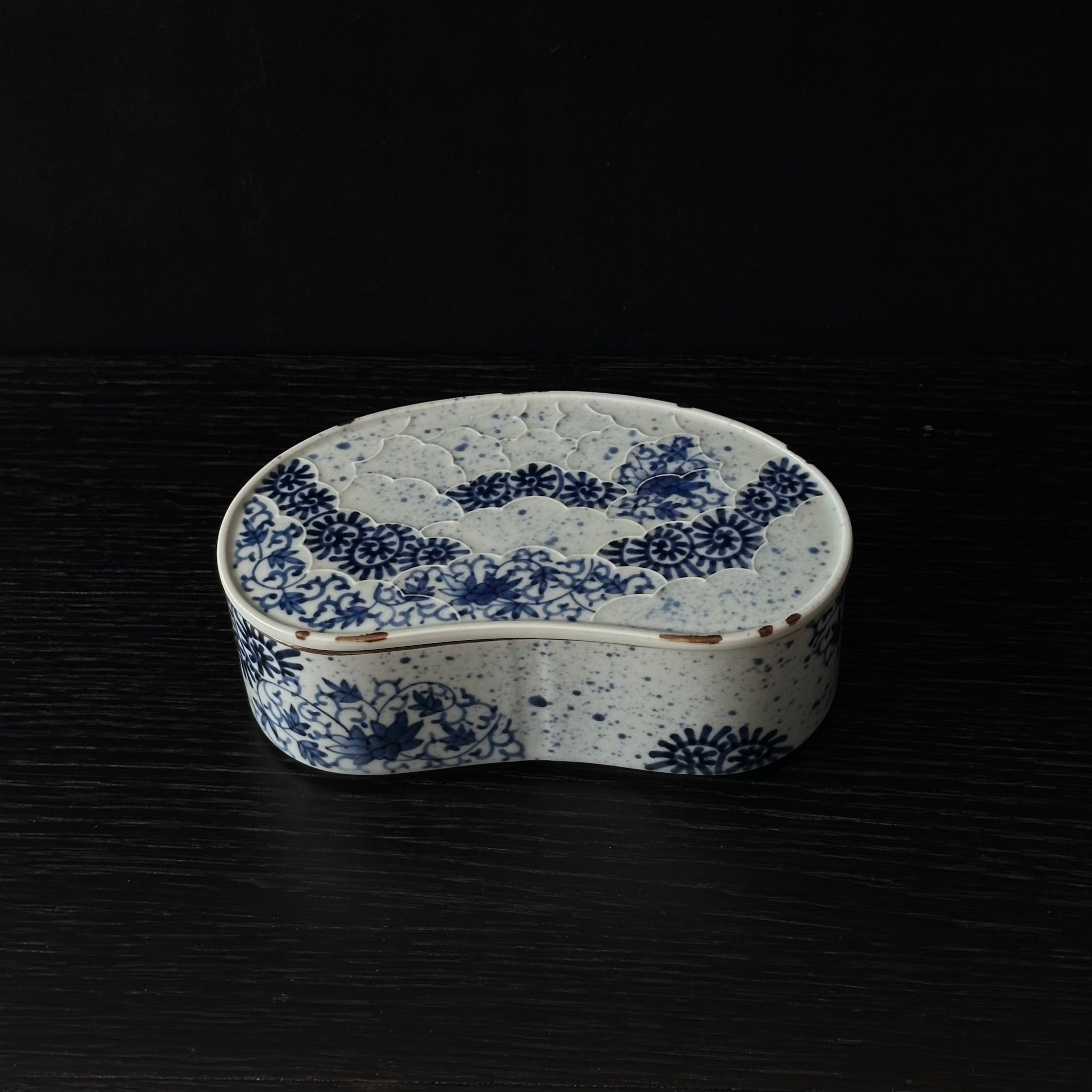
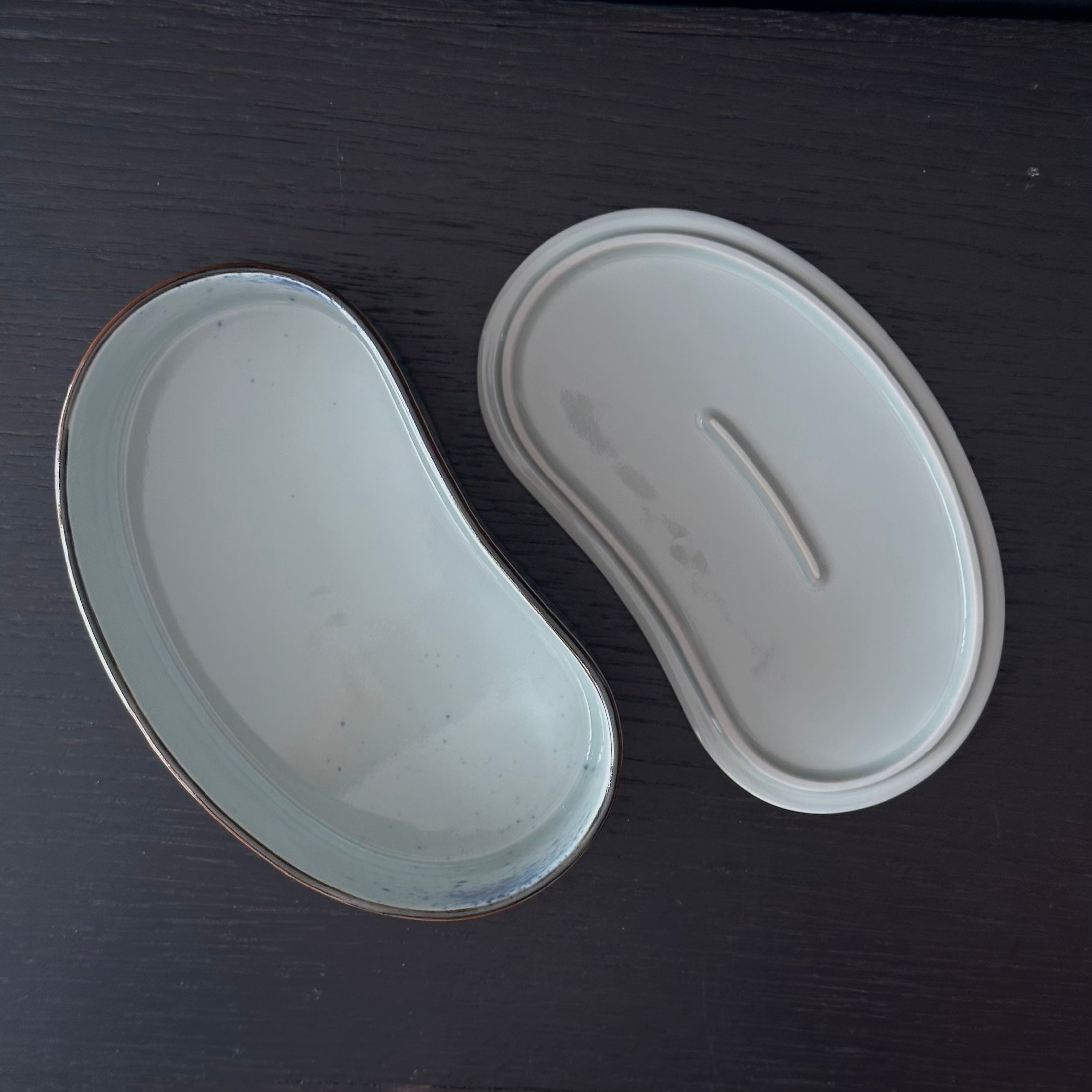
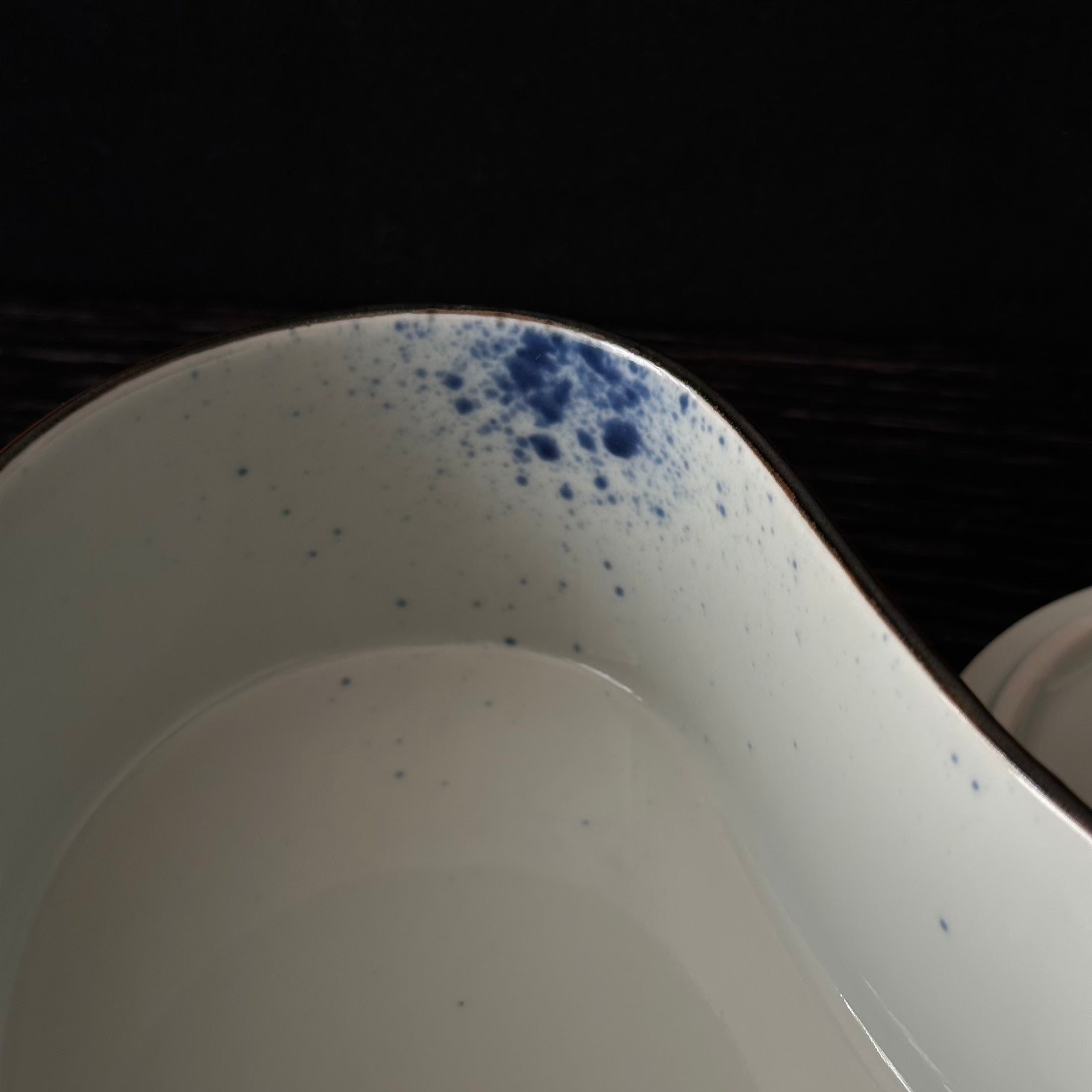
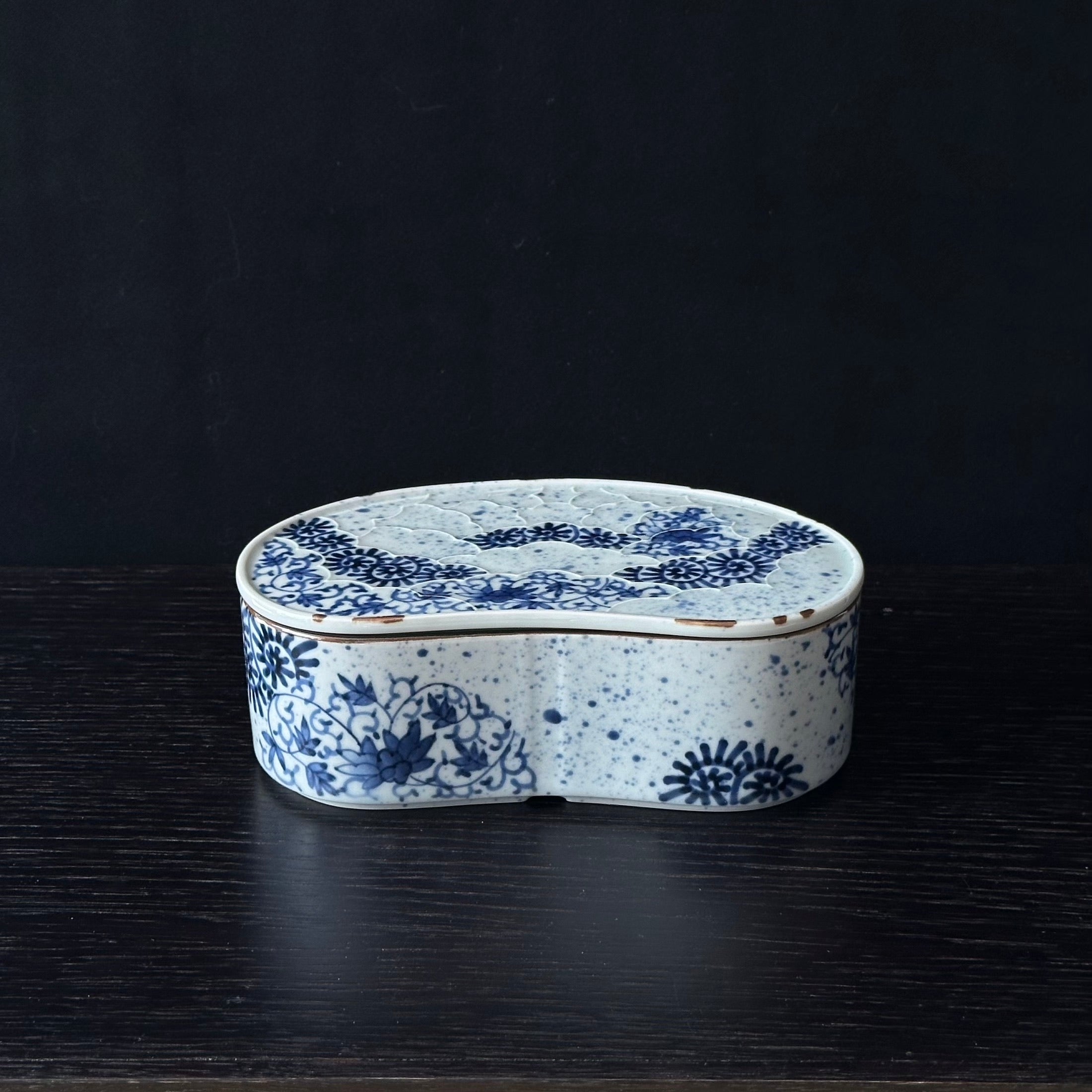
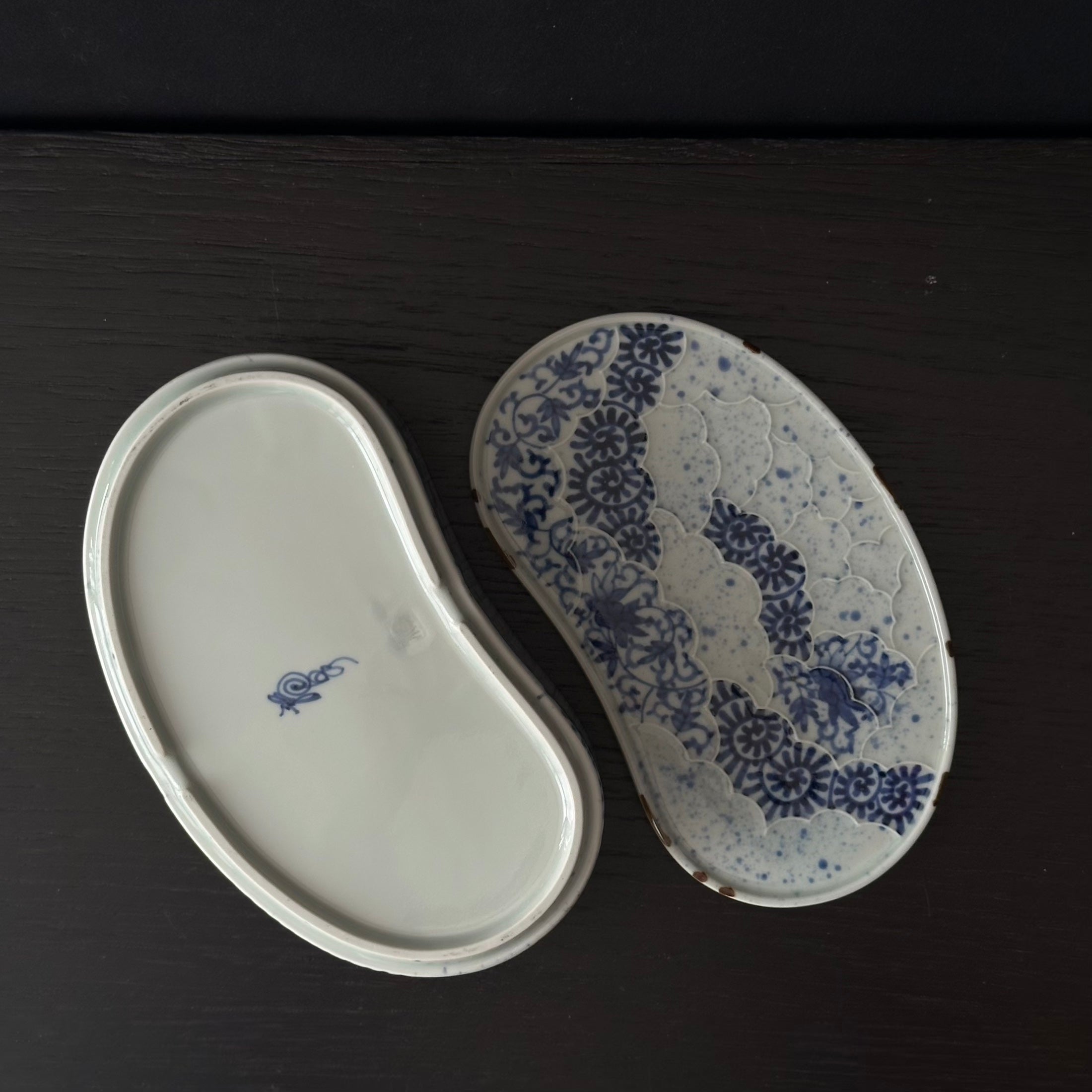
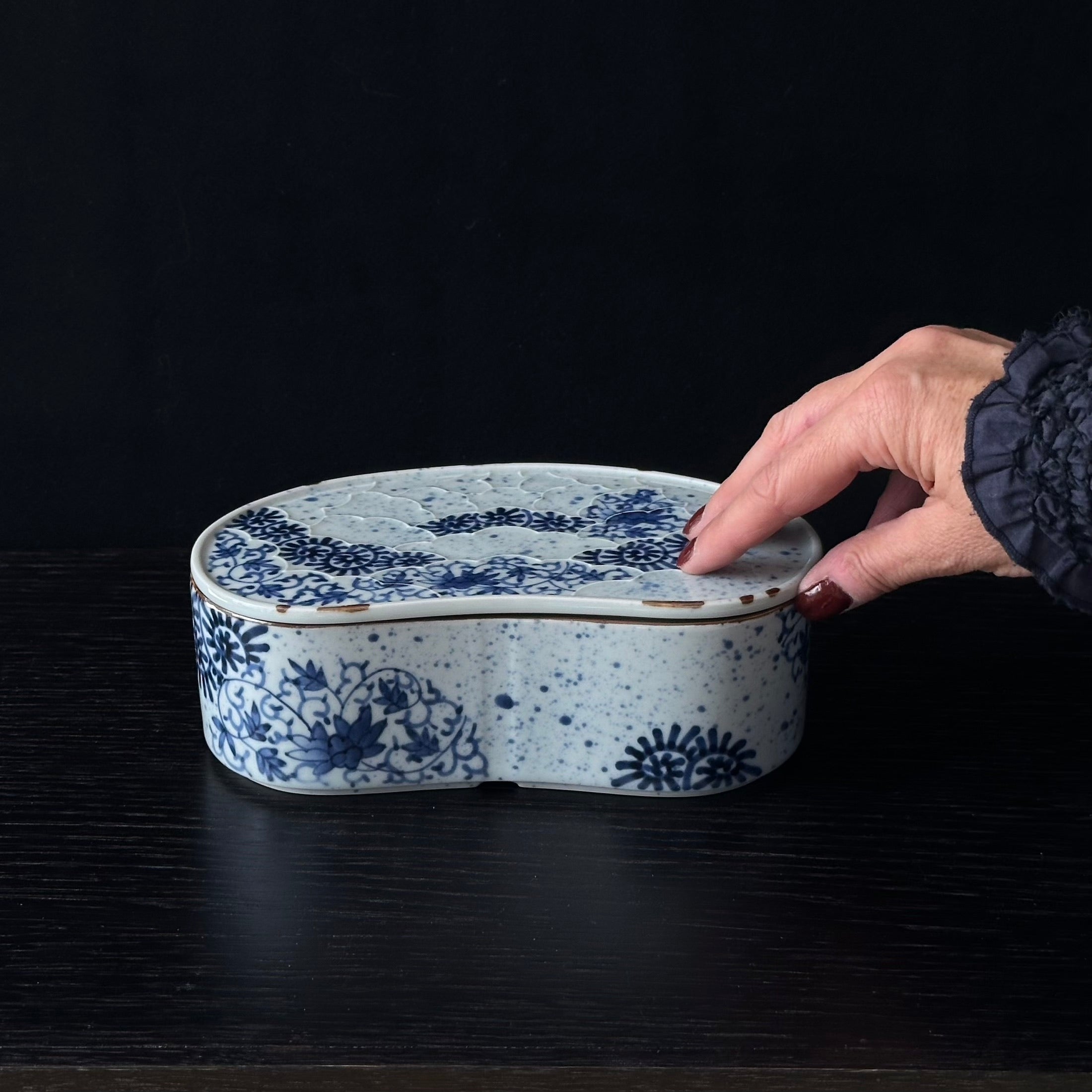
Mayu-gata (cocoon) box in sometsuke porcelain from Arita
This Japanese porcelain box from Arita, in the shape of a mayu-gata (cocoon), is distinguished by the purity of its line and the precision of its sometsuke (underglaze blue) decoration. Its organic, soft and asymmetrical silhouette is inspired by the shape of a silk cocoon, a traditional auspicious motif in Japan.
The ceramist
This piece was produced by the Fukusen kiln (Fukusen-gama), located in Arita, Saga Prefecture, and distributed by Marubun, a company renowned for the quality of its porcelain. Porcelain from the Fukusen kiln is renowned for the finesse of its paste, the precision of its design, and the clarity of the cobalt blue characteristic of sometsuke. The aesthetics of this box reflect this expertise: balanced proportions, mastery of the brush, and a keen sense of composition.
The technique and the decor
Modeled in fine Arita porcelain, this box features a hand-painted decoration in sometsuke (underglaze blue), then covered with a transparent glaze. The main motif, karakusa (arabesques), combines stylized plant scrolls with geometric floral motifs. This technique and these motifs, inherited from the first Arita kilns in the 17th century, remain emblematic of Japanese porcelain: an art of contrast between the limpidity of white and the depth of blue, requiring great control of fire and pigment. On the lid, golden brushstrokes evoke kintsugi.
Practical information
Place
Japan (Arita, Saga Prefecture)
Dimensions
Length 20 cm – Depth 11 cm – Height 7 cm
Weight
840 gr
Materials
Japanese Arita porcelain
Period
Contemporary
Care instructions
After use, drain the water and let it air dry. Avoid thermal shock and abrasive products. Wipe with a soft cloth. Do not use in the dishwasher, oven, or microwave.
DELIVERY
Delivery
Free delivery in mainland France for purchases over €200. Orders are generally dispatched within 2 working days, except in special cases, as indicated in the banner at the top of the website.
Precious objects are wrapped in a cloth tied according to the precious Korean art of pojagi. Some exceptions apply, particularly if the objects are large. Learn more >
Detailed delivery information is available via this link >
Your invoice will be sent by email
Payment methods
By card (Stripe operator): Visa, MasterCard, Discover, American Express.
Secure card payment with 3D Secure.
By PayPal, Apple Pay, Google Pay and Shop Pay
Returns and exchanges
14 days to change your mind.
Choose options












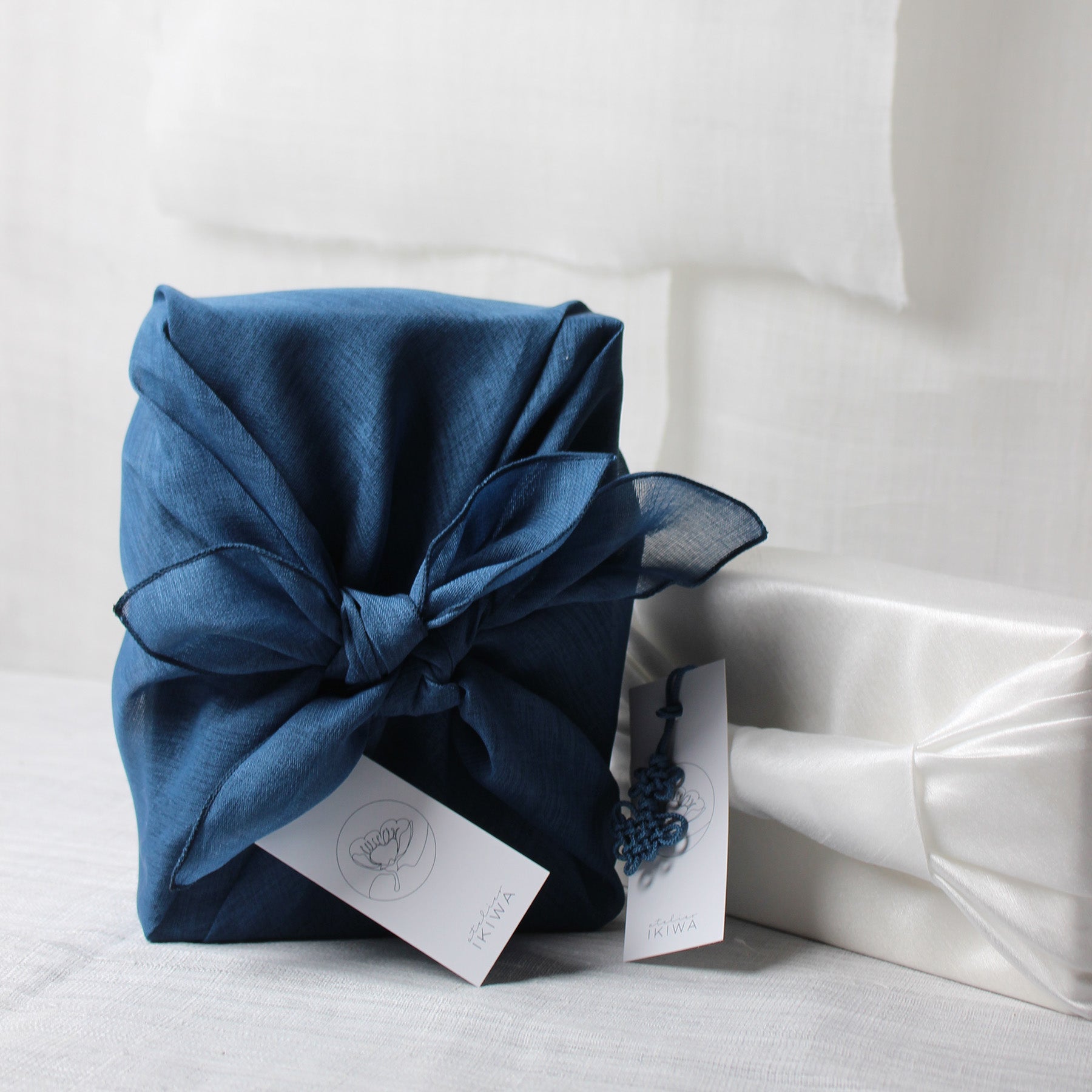
The art of wrapping
The precious objects are wrapped in a beautiful cloth beautifully tied according to the little-known art of Korean pojagi. Details and conditions >


